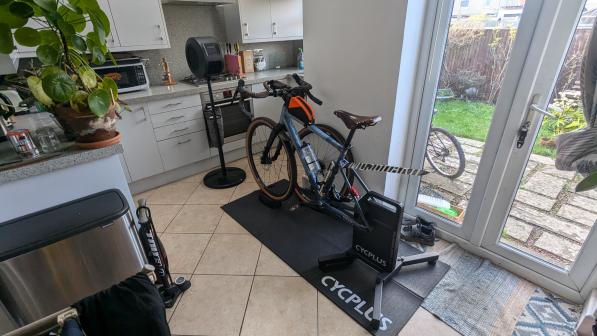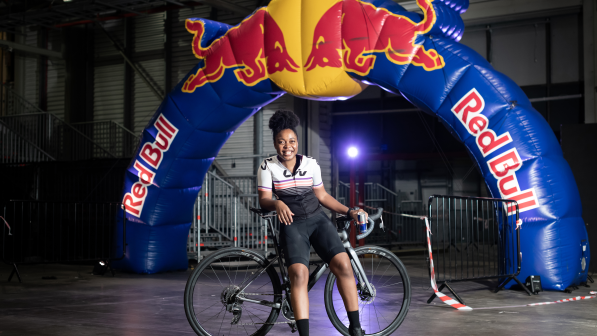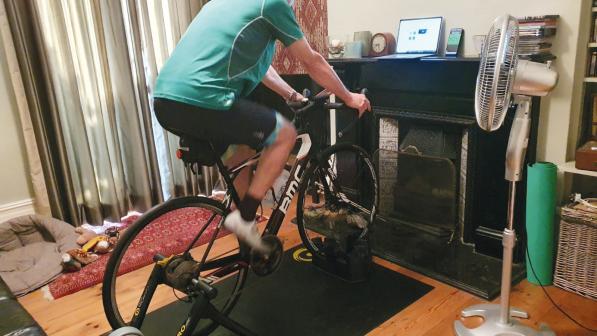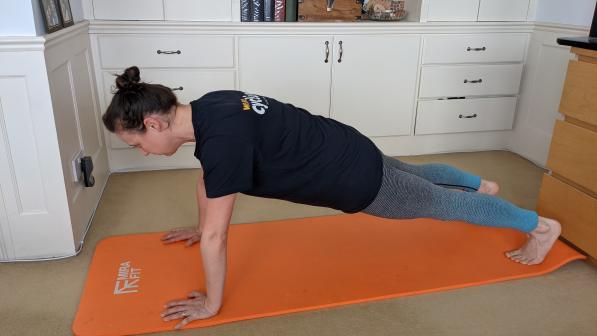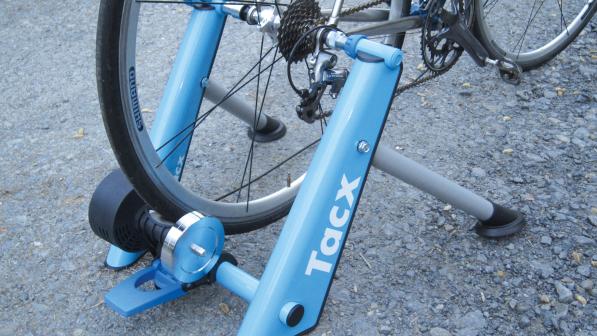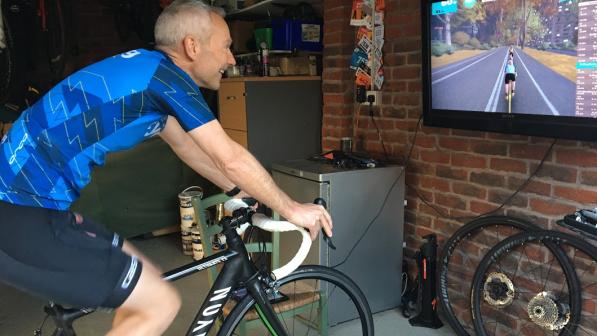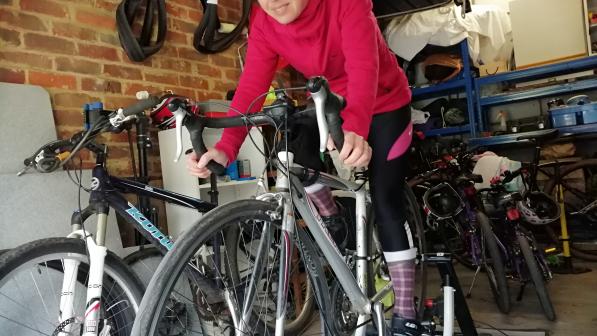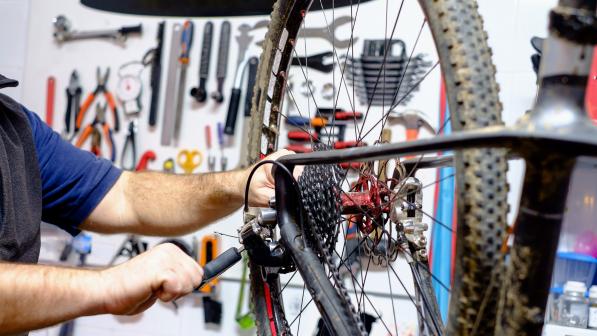Top tips for using a turbo trainer

Winter isn’t the ideal time to be outside on your cycle. It’s cold, wet, often icy and the days are short and can be overcast. It’s also a time when various viruses are doing the rounds. It’s easy to heed the siren call of the sofa and give up cycling altogether until the warmer, longer days of spring arrive.
Indoor cycling could be the solution to keeping fit and on your bike throughout winter. Being off the road and indoors means you’ll need some device to transform your bike into a stationary cycle, such as old-school rollers, a conventional turbo trainer, or swanky direct-drive ergometer.
Rollers require skill and concentration to master, plus careful positioning to make sure you are safe should you wobble – in a corridor is the most popular. Rollers do help you ride smoother and not get bored riding indoors, which for some is a great challenge to master when you can’t get outdoors.
Most people, however, will use a turbo trainer. Despite the huge difference in complexity and cost, the ground rules for using them are much the same: location, location, location. You want to be uninterrupted and also safe from small hands or pets or, maybe worse, constant interruption.
Perhaps you’ll take refuge in the garage? Maybe you could surround yourself and your turbo with a child’s play pen? Every scenario has a different solution. It’s worth testing a few to find the balance between solitude, view, comfort and ease of use.
Ready, steady…
As you are going nowhere, there won’t be any hills or headwinds to contend with so you can control your effort precisely. This allows you to do the most vital part of exercise: warm up gradually. Take around 10-15 minutes. This gives times for joints and muscles to warm up, the brain to adjust to exercise, your cycling muscles to get coordinated, and you to get comfortable.
Pedalling on a turbo trainer is simple enough – but how do you keep yourself entertained and motivated?
Joe Beer, cycling coach
When you’re training indoors simply for exercise, to de-stress or help you feel good, the effort should only be moderately taxing. You’re not chasing medals so eyeballs-out high-intensity interval training is not required. A simple gauge to check that you’re riding steadily is to periodically close your mouth and breathe just through your nose.
Pedalling on a turbo trainer is simple enough physically. But how do you keep yourself entertained and motivated to do it again in a day or so? Without the rolling panorama of the changing landscape, the traffic you need to be aware of, and the potholes you need to dodge, it’s hard to stay engaged.
You need distraction or entertainment. What kind? We’re all different, but here are some suggestions:
- Use background music to vary the tempo and effort. Headphones are a must if you want to really immerse yourself and not be distracted.
- Chat to a friend – ideally one who is also riding on a turbo – by phone or video chat. Time flies as you’re talking. It’s similar to when you’re chatting on road on a club ride, but safer.
- Set up a rear wheel speedometer and challenge yourself to complete a certain distance. Remember: relaxed nose-breathing only. As you get fitter you will get faster at this.
- Change the gears and the turbo’s resistance level to vary your cadence and effort. Use specific time increments, such as three minutes, or just when your music or TV show changes in some way.
- Set up YouTube to stream a ride that someone has done somewhere on the planet. Try this amazing ride in California.
- If you’ve got a compatible indoor training setup, sign up to one of the virtual cycling communities, such as BKool or Zwift.
The caveats
This is riding to keep you fit at times when outdoor riding is either not desirable or not possible. If you’re at home ill with a heavy cold, it’s not wise to exercise even moderately strenuously.
Exercising while unwell will temporarily make you feel better as endorphins surge through the body during the ride. It will catch up with you and hour or two later, though, and you’ll feel even worse because you’ve over-exerted yourself while unwell.
There’s a trend nowadays for high-intensity training; you’ll see sessions promoted by gyms, sports centres, and online sign-ups. Avoid this in your indoor riding plans when you’re riding indoors in the middle of winter. It is not essential to health, produces negative mood-state changes later, and is fraught with potential for injury and the suppression of your immune system.
You’re not chasing medals, so don’t hammer your body – nurture it. That’s not to say you shouldn’t do the odd short hard effort to blow off some steam or test yourself – for example, a three-mile time trial – but don’t do it multiple times per week (or at all if you don’t want to).
Bikes aren’t designed to be ridden aggressively when fixed in place; out-of-the-saddle sprints could bend or break something
Joe Beer
You will sweat a lot on a turbo trainer. So carefully consider what bike to use on it. Check it periodically and keep it clean. In some cases you could invalidate your warranty or, worse, cause dangerous stress points or corrosion. For example, sweat-drenched bar tape may result in the sweat corroding the handlebar.
Keep in mind that there’s no coasting with a turbo trainer, so you might find your legs tiring out faster than expected. Take a rest or drop your pace for a stretch until you feel more comfortable.
Bikes aren’t designed to be ridden aggressively when fixed in place; out-of-the-saddle sprints could bend or break something. Take the bike off the turbo when it doesn’t need to be on there to limit stress on the frame or components, and again, keep it clean. Set everything out ready for your next session when you finish. Then there’s nothing to stop you riding again tomorrow.
